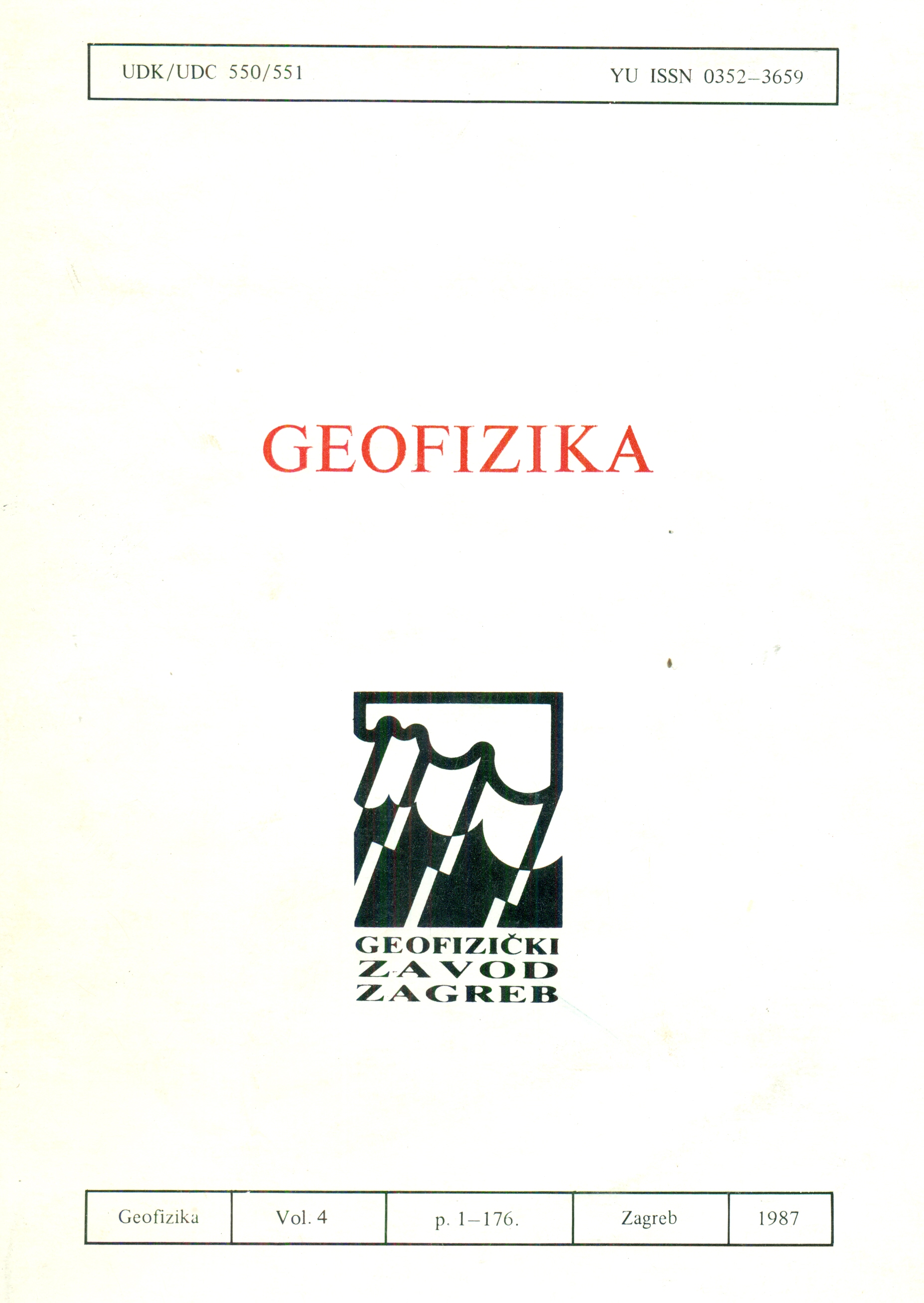Cold air outbreak and the Adriatic bor
Abstract
The case studies of two cold air outbreaks in Zagreb which cause a local wind bora on the eastern Adriatic area are presented ( 17 December 1978 and 7 January 1982 ).
The cold air outbreak on 17 December 1978 appeared as a shallow zone of large equivalent potential temperature drop ( Q e ) and NE wind with maximum at 800 m above ground. The stable layer which was placed above this zone was more expressed in terms of vertical Q e - rather than temperature-structure which was consequence of very humid and warm air advected from SW above the cold bora layer. This upstream bora layer characteristics and strengthening of cyclonic activity on the Tyrrhenian Sea caused a longlasting and strong bora associated with precipitation on the northern Adriatic . The strongest bora with maximum gusts of 35.2 m s -1 and with the longest duration of bora was 28-40 hours with the maximum gusts varying from 14.9 m s -1 to 34.7 m s -1 .
In the case of 7 January 1982 , a strong bora, associated with anticyclone strengthening over the middle Europe , occurred along the entire Adriatic coast as a consequence of an expressed cold and dry air outbreak. The main characteristic in this situation was a narrow zone of sudden drop of Q e and NE wind with a maximum at 2.5 km altitude. The stability above this zone was smaller than in the first situation and the temperature fall occurred throughout the troposphere. Due to extremely dry air supply, the bora occurred without precipitation lasting from 16 to 31 hours and even 52 hours in Senj. The maximum gusts varied from 17.0 m s -1 to 35.4 m s -1 .
Two case studies are not enough for a general conclusion but it should be emphasized that the bora had quite different characteristics in the considered frontal situations.
Downloads
Published
Issue
Section
License
Copyright (c) 2021 Geofizika journal

This work is licensed under a Creative Commons Attribution-NonCommercial 4.0 International License.

